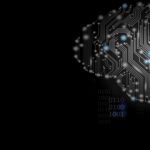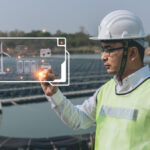Introduction: The Urban Revolution and Smart Cities
With immense urbanization, cities all around the world are faced with extreme pressures regarding infrastructure, public services, and environmental sustainability. The smart city comes into play; here, smart cities utilize intelligent infrastructure and digital technology to promote citizen health and wellness, maximize operational efficiency, and achieve smart mobility solution.
Smart cities are not a future vision but a response to the reality of present-day urbanization. In synergy by the use of Internet of Things (IoT) devices, artificial intelligence (AI), big data analytics, and cloud computing, smart cities are transforming the way cities operate.
What Is a Smart City?
Smart city employs network technology and data-driven strategy to utilize maximum resources, services, and infrastructure. The aim is to utilize maximum energy, conserve wastage, optimize public services, and render the people more active.
Key Smart City Features:
- Smart traffic management systems
- Real-time public transport
- Smart energy grid and lighting
- Waste and water management systems
- Smart health and education access
- Networked public safety networks
Under all these systems is intelligent infrastructure—the baseline layer where data gathering, intercommunications, and automations take place.
Intelligence with Intelligent Infrastructure
Intelligent infrastructure involves the implementation of smart technologies into conventional city infrastructure such as roads, utilities, buildings, and public facilities. The infrastructures are designed to “think,” “learn,” and react to environmental or user need variations.
Intelligent Infrastructure examples are Smart Grids in which the sensors and governance of electricity transmission are done to maximize utilization; Connected Roads, enabled with sensors to gauge traffic and road conditions; Digital Twins, which are virtual city copies used to simulate situations and take real-time decisions; and Sensor-Based Buildings with self-regulating lighting, temperature, and air quality.
With intelligence embedded into physical assets, cities will become aware, sustainable, and resilient.
Benefits of Smart Cities and Intelligent Infrastructure
-
Greater Mobility within Cities
The enhancements in mobility within cities, though most visible, are the greatest impacts that smart cities would provide. Intelligent traffic lights, vehicle-to-infrastructure, and mobility-as-a-service lessen the time spent in traffic congestion and make public transport cheaper, safer, and faster.
-
Energy Efficiency Improvement
The smart city, in the view of smart meters, self-lighting systems, and solar infrastructures, attempts using this to achieve energy efficiency. Emission decreases, utility bills decrease, and energy becomes more sustainable.
-
Higher Available Security
From AI-based surveillance and predictive policing, as well as emergency response software, smart cities can make their public safety systems more robust and reduce crime.
-
the Green Economy-Waste and Water Management Infrastructure
Sensor monitoring for waste, for example, enables the cities to observe the volumes of waste inside bins and optimize route collection. Intelligent water infrastructures can do the same for leak detection, quality checks, and minimizing water waste.
-
Involvement and Transparency of Citizens
Smart Online Platforms allow an individual to report, find, or even receive updates live on matters. Such virtualities can make a potential citizen a more engaged citizen.
High-Demand Keywords Shaping Smart City Conversation
To see what is driving smart city conversation online, here are some SEO-driven, top-ranked keywords:
- Smart city solutions
- IoT in smart cities
- Smart infrastructure
- Smart mobility
- Smart energy systems
- Urban innovation
- Digital transformation in cities
- Smart city projects
- AI in city planning
- Sustainable city technologies
They are global issues of concern in technology-driven urban development and an insight into state-of-mind debate.
Smart Cities in Action in the Real World: Examples
-
Singapore
Singapore is heavily set up as the template for creating a smart city. From driverless buses and predicted traffic to an entire nation smart health platform, Singapore’s infrastructure is people-centric and data-centric.
-
Barcelona
Barcelona has installed smart water meters, dynamic streetlights, and an urban sensor network. They have saved energy expenses and enhanced public services.
-
Amsterdam
The smart city vision of Amsterdam is based on green city growth, stimulating the use of electric vehicles, online parking, and data-exchange platforms.
-
Dubai
Dubai hopes to become the world’s smartest city by 2030. It has envisioned blockchain government, smart traffic solutions using AI, and biometric public services.
Implementation Challenges of Smart City
While smart infrastructure holds great promise, creating a smart city is not challenge-free:
-
Data Security and Privacy
Processing and storing gigantic information leads to concerns about surveillance, data abuse, and invasion of privacy. Proper cyber security measures are needed.
-
High Initial Capital
Smart technology is expensive to install and maintain. Installation will require financing or public-private partnership for most municipalities.
-
Compatibility with Existing Systems
Compatibility with older city systems is a concern regarding integration.
-
Digital Divide
Providing equal access to the advantages of a smart city for all citizens is important. Unless properly planned, sections of society can be denied digital services.
Future Prospects: Where Are Smart Cities Going?
The smart city of the future is in hyper-connectivity, automated by AI and de-centralized infrastructure. As 5G networks and edge computing expand, data processing will become de-centralized, coming back towards its source, where systems will be quick and interactive.
Cities are even piloting digital twins—computerized, real-time replicas of infrastructure on which planners can predict the impact of planning decisions. They will likely dominate urban development service and crisis management.
Green buildings, charging infrastructure for electric vehicles, and climate-resilient urban design will continue to fuel investments.
Conclusion:
Building Tomorrow’s Cities Smart cities and smart infrastructure are bound to go a long way into a greener, safer, and much more efficient urban future. Investments in networked infrastructure and data-driven policy-making bring city authorities and planners together to address the fundamental problems affecting the city as well as improving citizens” well-being.
- Smart Cities & Intelligent Infrastructure
- Explore how smart cities and intelligent infrastructure are transforming urban living through technology, data, and sustainable solutions for a more connected future.
- smart mobility
Related posts:
 Can Generative AI Truly Replace Human Creativity in the Future?
Can Generative AI Truly Replace Human Creativity in the Future?
 Artificial Intelligence Development Services: What You Need to Know
Artificial Intelligence Development Services: What You Need to Know
 Global Pet Food Packaging Market Size, Trends, and Forecast to 2030
Global Pet Food Packaging Market Size, Trends, and Forecast to 2030
 Mindfulness Meets Machine: How Enlightenment AI Blends Ancient Wisdom with AI
Mindfulness Meets Machine: How Enlightenment AI Blends Ancient Wisdom with AI
 How B2B Payments Platforms are Transforming Corporate Financial Transactions
How B2B Payments Platforms are Transforming Corporate Financial Transactions
 Empowering Innovation with IDE Lab as a Service and GPU as a Service
Empowering Innovation with IDE Lab as a Service and GPU as a Service
 Water Network Management Software: How Turing Powers Smarter Infrastructure for a Thirsty World
Water Network Management Software: How Turing Powers Smarter Infrastructure for a Thirsty World
 Boosting Global Customer Engagement with Real-Time Accent Harmonizers
Boosting Global Customer Engagement with Real-Time Accent Harmonizers







